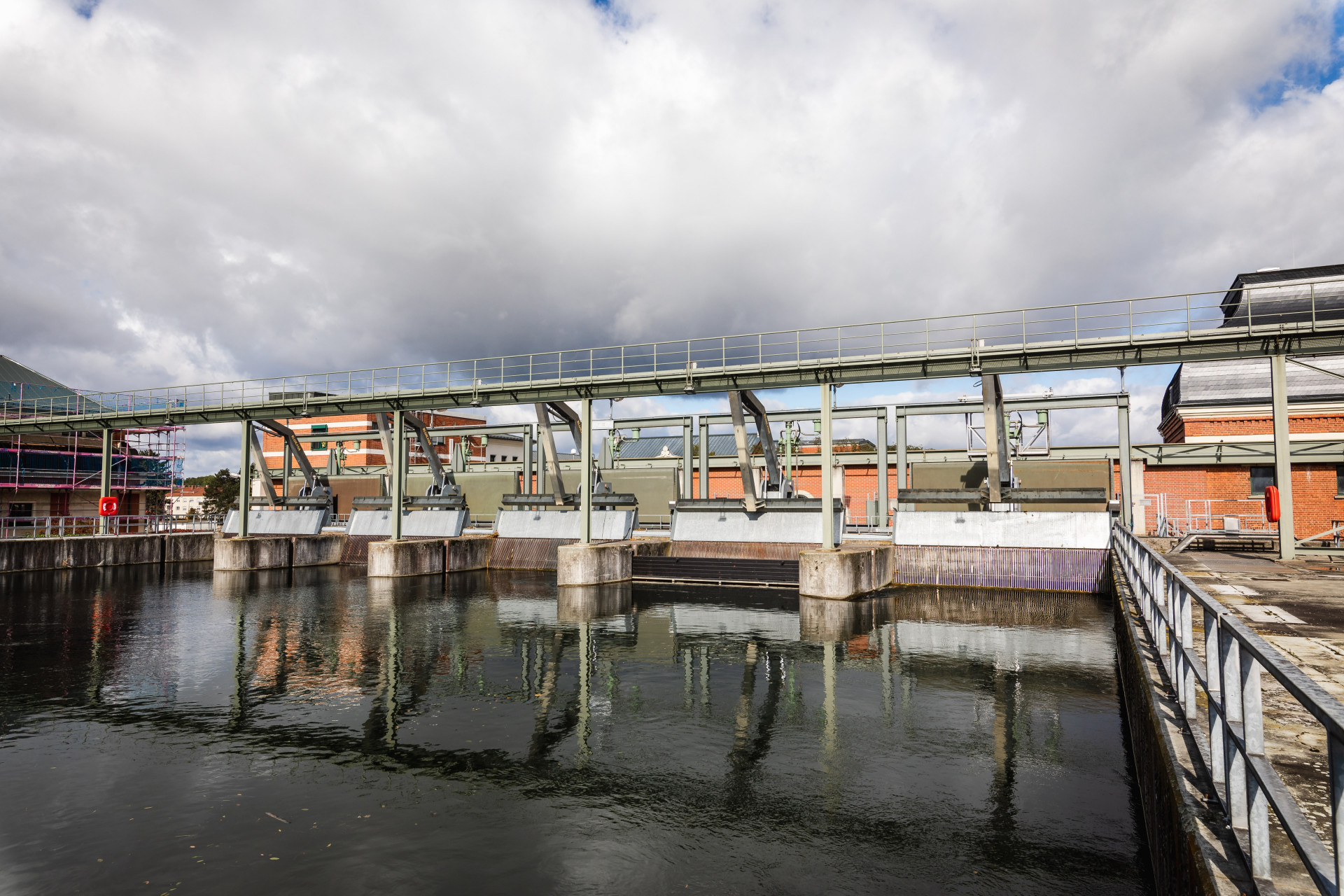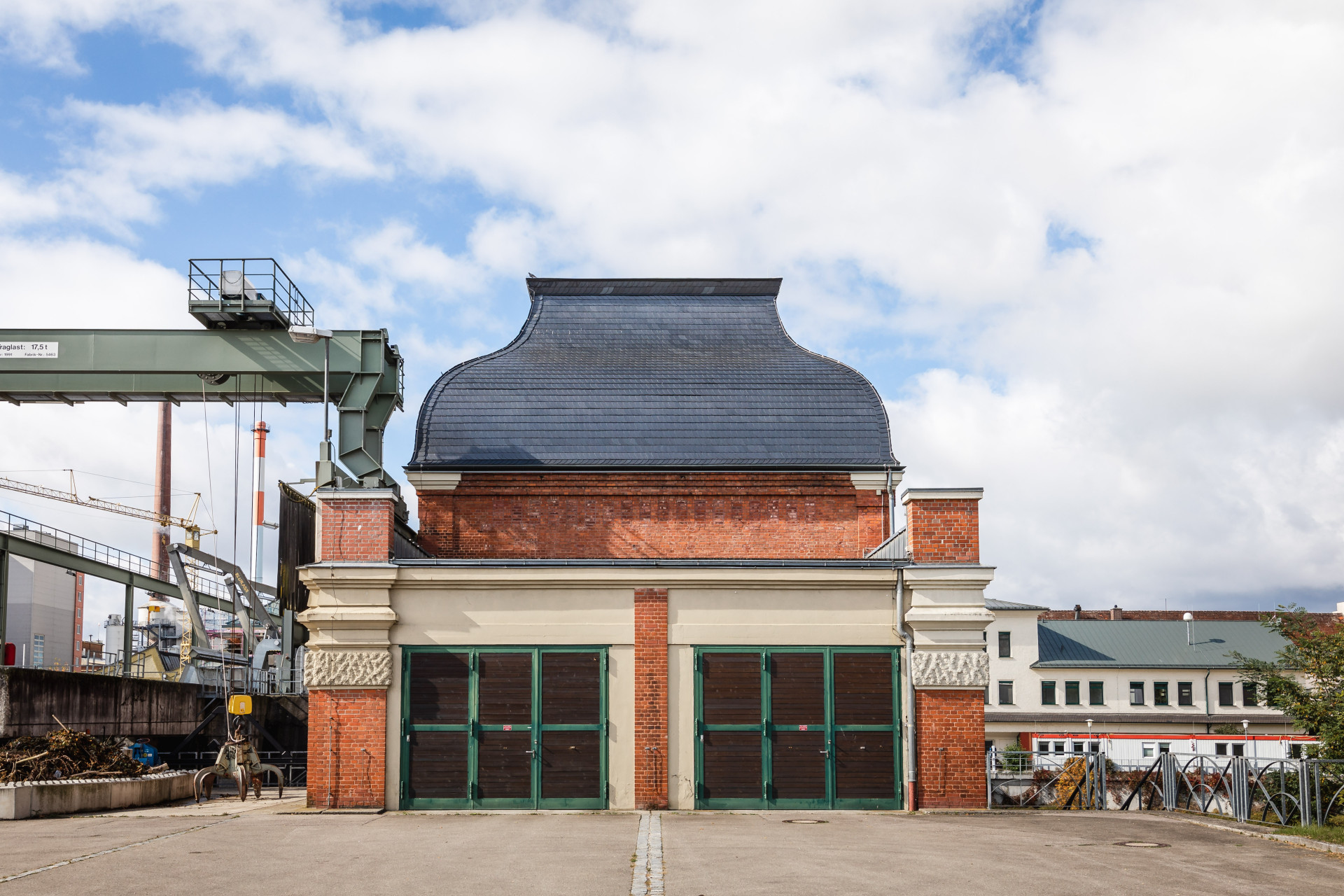
16
Power plant Gersthofen
The first of three hydroelectric power stations on the newly constructed Lech canal – a palatial building with baroque forms – went into operation in 1901. It was no longer just connected to a factory but marked the beginning of comprehensive electricity supply in Bavarian Swabia.
Building history and description
- Hydroelectric power plant, still in operation today
- City of Gersthofen, Landkreis Augsburg; Adolf-von-Baeyer-Straße
- Granting of the concession in 1896
- Start of sewer excavation 1898
- Commissioning 1901
- Completion of the hydropower plant around a steam power plant 1904
- Overbuilding of the lock 1907
- Modernization of the system technology 1961
- single-storey, elongated solid building in the style of historicism
- Facade in exposed brickwork with pilasters and white decorative elements
- Round arched windows with steel rungs
- eastern part of the building ends with a flat roof
- western part of the building two-storey with curved hipped roof
- Building over the lock of 1907 is similar to the western part of the building
- self-supporting machine hall with 10.5m height and 13m width with filigree riveted steel truss girders and crane runway in 8m height
Use and purpose
- Hydropower plant for power generation (first for company, then for region)
- initially designed five turbines only 16 cubic meters per second
- after the construction of the Meitingen power plant replacement of the old plants with new Kaplan tube turbines and AEG generators
- technical Equipment:
- five 1963 AEG Generators
- five turbines of unknown design
- Power station on the Lech Canal built in three sections from 1898-1922
- Foundation of the Lechwerke 1903
- Power plant as an object of the UNESCO nomination stands for:
- Further development from small-scale to industrial scale
- Further development from a simple waterwheel to a highly effective turbine
- early replacement of mechanical transfers of hydroelectric power in the region by electrification
- Early replacement of local hydropower and electricity generation by decentralized run-of-river power plants
- Use of renewable energies benefits the environment,
- "Augsburg tradition" of sustainability as a global role model
Authenticity and unique features
- Power station building mostly in original condition
- Kaplan tube turbines and AEG generators still in operation today
- First large hydropower plant on the Lech and in Bavaria
- Start of the nationwide power supply in Bavarian Swabia
- Providing technical development to a well-preserved, exemplary hydroelectric power plant





